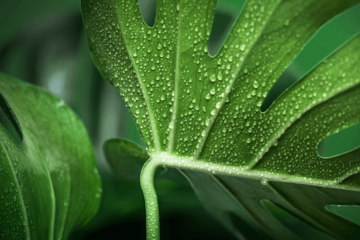Browse
Education
Polyploidy
Genomic analysis also has shown that one of the important mechanisms of evolution is multiplication of chromosome sets, resulting in polyploidy (“many genomes”). In plants and animals, spontaneous doubling of chromosomes can occur. In some plants, the chromosomes of two related species unite via cross-pollination to form a fusion product. This product is sterile because each chromosome needs a pairing partner in order for the plant to be fertile. However, the chromosomes of the fusion product can accidentally double, resulting in a new, fertile species. Wheat is an example of a plant that evolved by this means through a union between wild grasses, but a large proportion of plants went through similar ancestral polyploidization.
By:
rupali
Wednesday, Jul 21, 2021
HEALTH AND NUTRITION
+1
No Preview Available
Leave a comment
The study of disease is called pathology. It involves the determination of the cause (etiology) of the disease, the understanding of the mechanisms of its development (pathogenesis), the structural changes associated with the disease process (morphological changes), and the functional consequences of those changes. Correctly identifying the cause of a disease is necessary to identifying the proper course of treatment.
Ref: http://www.aptimize.com/
By:
rupali
Monday, Sep 20, 2021
AGRI-FOOD SYSTEMS
+2

Leave a comment
https://aap-qa.apps.venturit.org/pathway/natural-language-or-ordinary-language
By:
rupali
Tuesday, Jul 20, 2021
EDUCATION

No Preview Available
Leave a comment
https://aap-qa.apps.venturit.org/AAPBridge/groups/science/stories/coronaviruses-cov-are-a-large-family-of-viruses-that-cause-illness-ranging-from-the-common-cold
By:
rupali
Tuesday, Jul 20, 2021
EDUCATION
No Preview Available
Leave a comment
Myxomatosis
Myxomatosis, formally infectious myxomatosis, or myxomatosis cuniculi, a highly fatal infectious viral disease of rabbits. It is characterized by fever, swelling of the mucous membranes, and the presence of nodular skin tumours. The disease exists naturally in populations of certain South American rabbits of the genus Sylvilagus and has been introduced into western Europe and Australia as a means of rabbit population control.
By:
rupali
Monday, Jul 19, 2021
CULTURE AND SOCIETY
+1
No Preview Available
Leave a comment
In populations of finite size, the genetic structure of a new generation is not necessarily that of the previous one. The explanation lies in a sampling effect, based on the fact that a subsample from any large set is not always representative of the larger set. The gametes that form any generation can be thought of as a sample of the alleles from the parental one. By chance the sample might not be random; it could be skewed in either direction. For example, if p = 0.600 and q = 0.400, sampling “error” might result in the gametes having a p value of 0.601 and a q of 0.399. If by chance this skewed sampling occurs in the same direction from generation to generation, the allele frequency can change radically.
By:
rupali
Monday, Jul 19, 2021
AGRI-FOOD SYSTEMS
+1
Leave a comment
shoot systems
Entire shoot systems are often modified for such special functions as climbing, protection, adaptation to arid habitats, and water or food storage. The modifications generally involve structural and shape changes to the stem and the reduction of the leaves to small scales. Many of the modifications parallel those previously described for leaves. In the passion flower (Passiflora; Passifloraceae) and grape (Vitis vinifera; Vitaceae), axillary buds develop as tendrils with reduced leaves and suppressed axillary buds. In the grape these axillary tendrils are actually modified and reduced inflorescences. In the plant from which strychnine is obtained (Strychnos nux-vomica), the axillary buds develop into hooks for climbing.
By:
rupali
Monday, Jul 19, 2021
AGRI-FOOD SYSTEMS
+1

No Preview Available
Leave a comment
Species, in biology, classification comprising related organisms that share common characteristics and are capable of interbreeding. This biological species concept is widely used in biology and related fields of study. There are more than 20 other different species concepts, however. Some examples include the ecological species concept, which describes a species as a group of organisms framed by the resources they depend on (in other words, their ecological niche), and the genetic species concept, which considers all organisms capable of inheriting traits from one another within a common gene pool and the amount of genetic difference between populations of that species.Ref: species | Definition, Types, & Examples | Britannica
By:
rupali
Monday, Jul 19, 2021
AGRI-FOOD SYSTEMS
+2

No Preview Available
Leave a comment
Garden asparagus, the most economically important species of the genus, is cultivated in most temperate and subtropical parts of the world. As a vegetable, it has been prized by epicures since Roman times. It is most commonly served cooked, either hot or in salad; the classic accompaniment is hollandaise sauce. In 2018 the world’s leading producers of asparagus were China, Peru, Mexico, Germany, and Thailand. Commercial plantations are not undertaken in regions where the plant continues to grow throughout the year, for the shoots become more spindly and less vigorous each year; a rest period is required. Where the climate is favourable and with proper care, an asparagus plantation may be productive for 10 to 15 years or longer. The best soil types for asparagus are deep, loose, light clays, with much organic matter, and light sandy loams. Asparagus will thrive in soils too salty for other crops, but acidic soils are to be avoided. The asparagus cutting season varies from 2 to 12 weeks, depending on age of the plantation and on climate.
By:
rupali
Friday, Jul 16, 2021
AGRI-FOOD SYSTEMS
+2

Leave a comment
Tracheophyte, also called vascular plantLeaf, in botany, any usually flattened green outgrowth from the stem of a vascular plant. As the primary sites of photosynthesis leave manufacture food for plants
Bryophyte, the traditional name for any nonvascular seedless plant—namely, any of the mosses (division Bryophyta), hornworts (division Anthocerotophyta), and liverworts (division Marchantiophyta). Most bryophytes lack complex tissue organization, yet they show considerable diversity in form and ecology. They are widely distributed throughout the world and are relatively small compared with most seed-bearing plants.
By:
Edwin Castel
Thursday, Jul 15, 2021
AGRI-FOOD SYSTEMS
+1

No Preview Available
Leave a comment
Water
Water occurs as a liquid on the surface of Earth under normal conditions, which makes it invaluable for transportation, for recreation, and as a habitat for a myriad of plants and animals. The fact that water is readily changed to a vapour (gas) allows it to be transported through the atmosphere from the oceans to inland areas where it condenses and, as rain, nourishes plant and animal life
By:
rupali
Tuesday, Jul 13, 2021
AGRI-FOOD SYSTEMS
+1

No Preview Available
Leave a comment
Leaf IN botany
Leaf, in botany, any usually flattened green outgrowth from the stem of a vascular plant. As the primary sites of photosynthesis, leaves manufacture food for plants, which in turn ultimately nourish and sustain all land animals. Botanically, leaves are an integral part of the stem system. They are attached by a continuous vascular system to the rest of the plant so that free exchange of nutrients, water, and end products of photosynthesis (oxygen and carbohydrates in particular) can be carried to its various parts. Leaves are initiated in the apical bud (growing tip of a stem) along with the tissues of the stem itself. Certain organs that are superficially very different from the usual green leaf are formed in the same manner and are actually modified leaves; among these are the sharp spines of cacti, the needles of pines and other conifers, and the scales of an asparagus stalk or a lily bulb.
By:
rupali
Friday, Jul 16, 2021
CULTURE AND SOCIETY
+1


Leave a comment